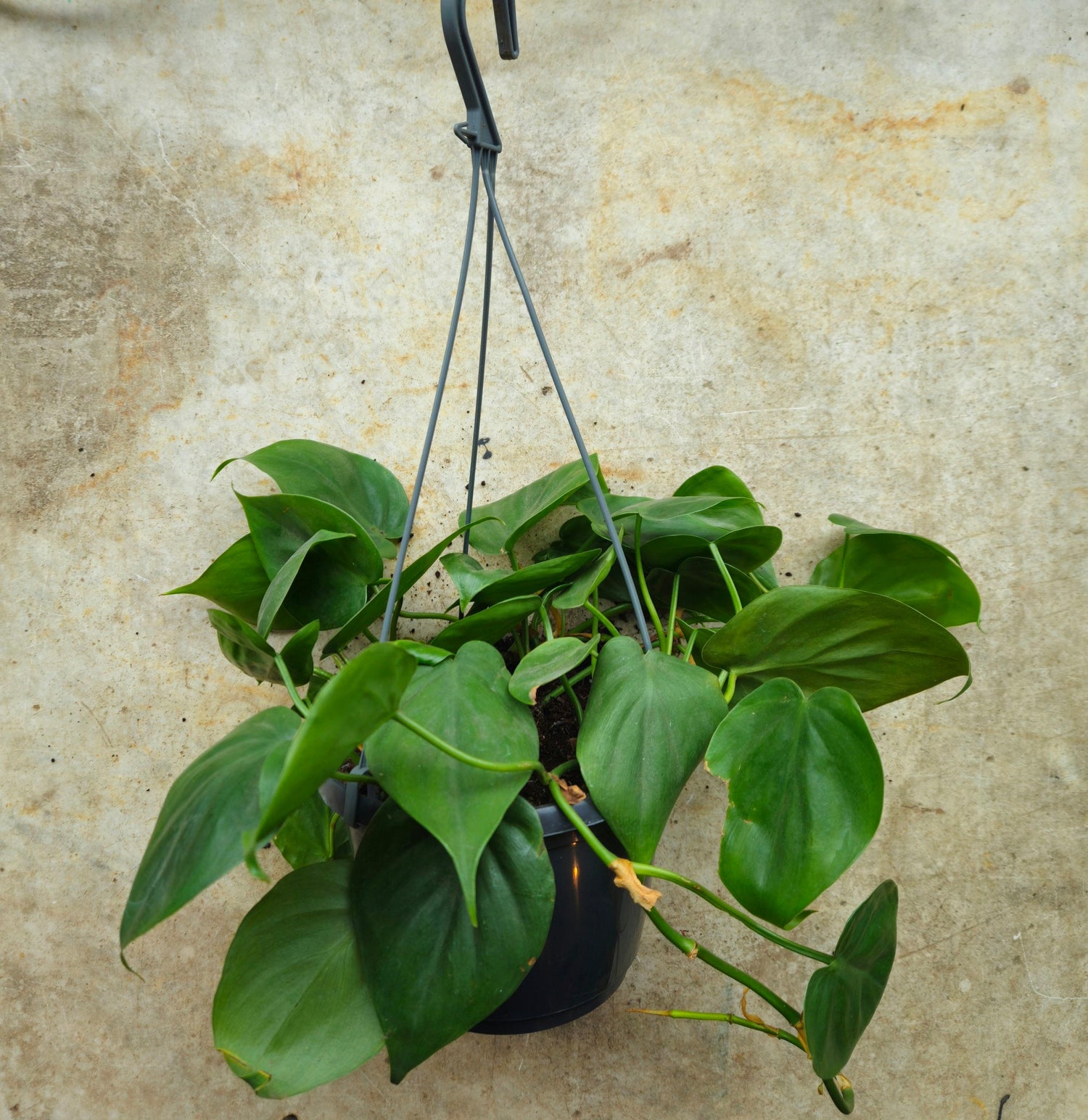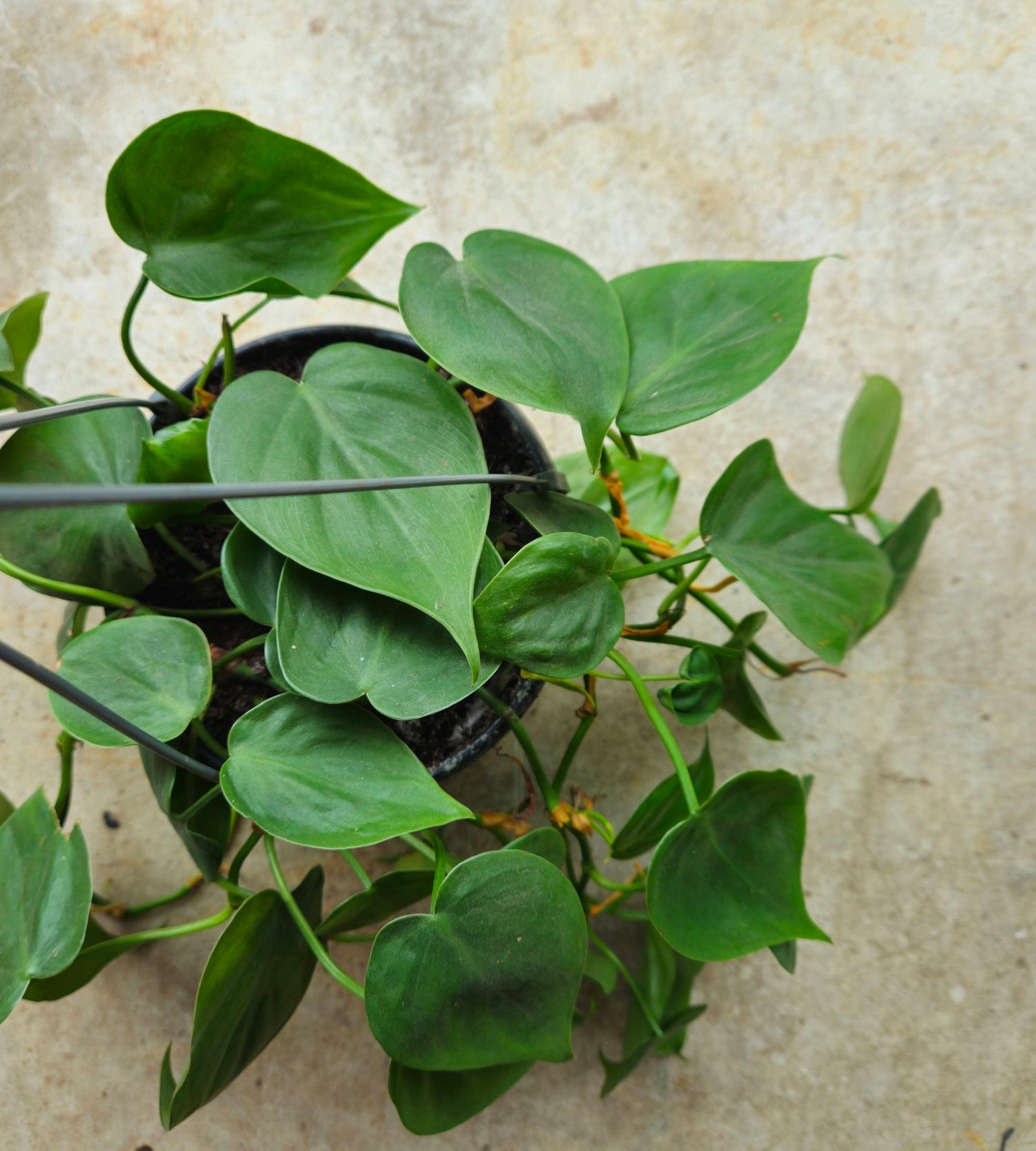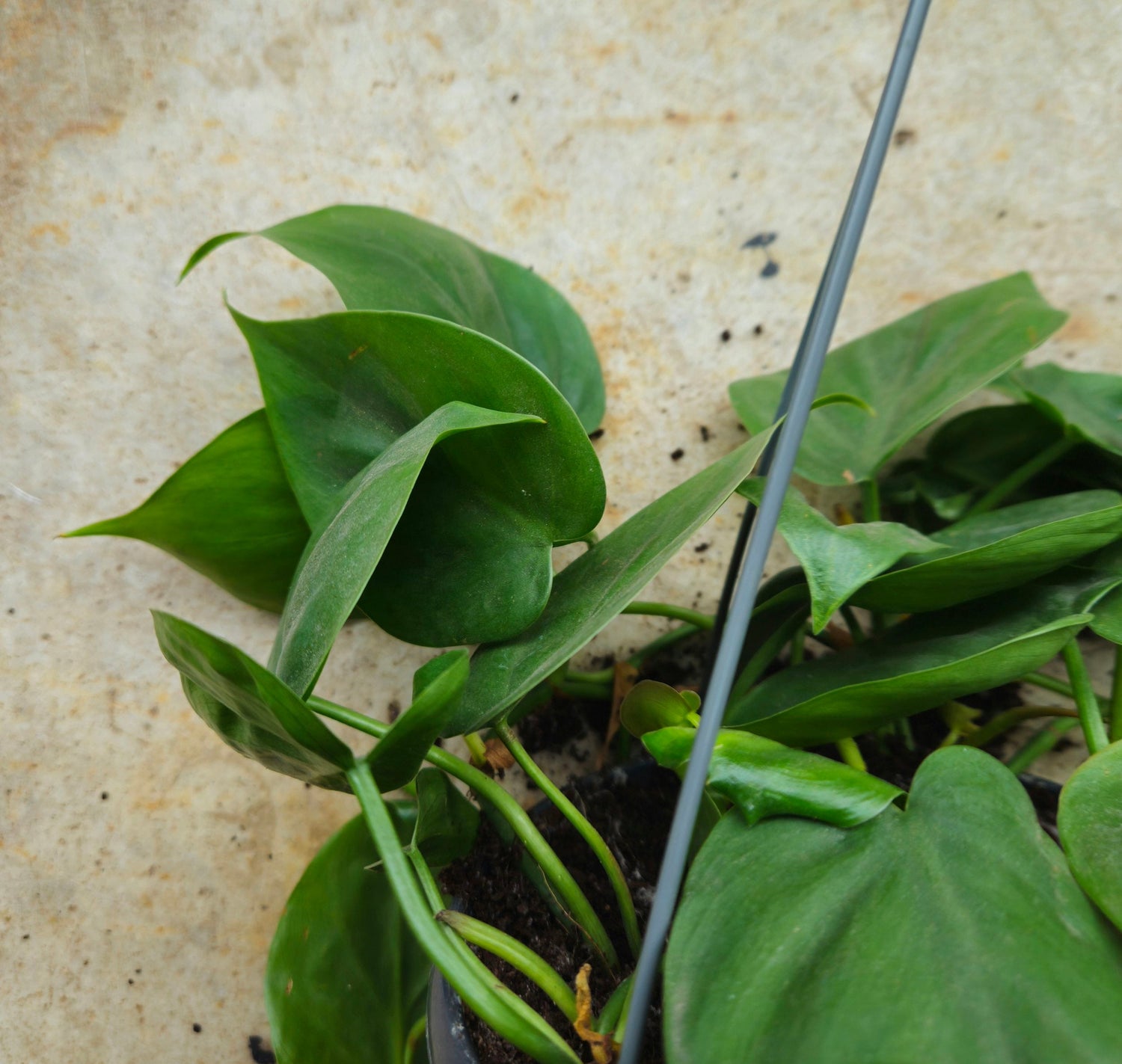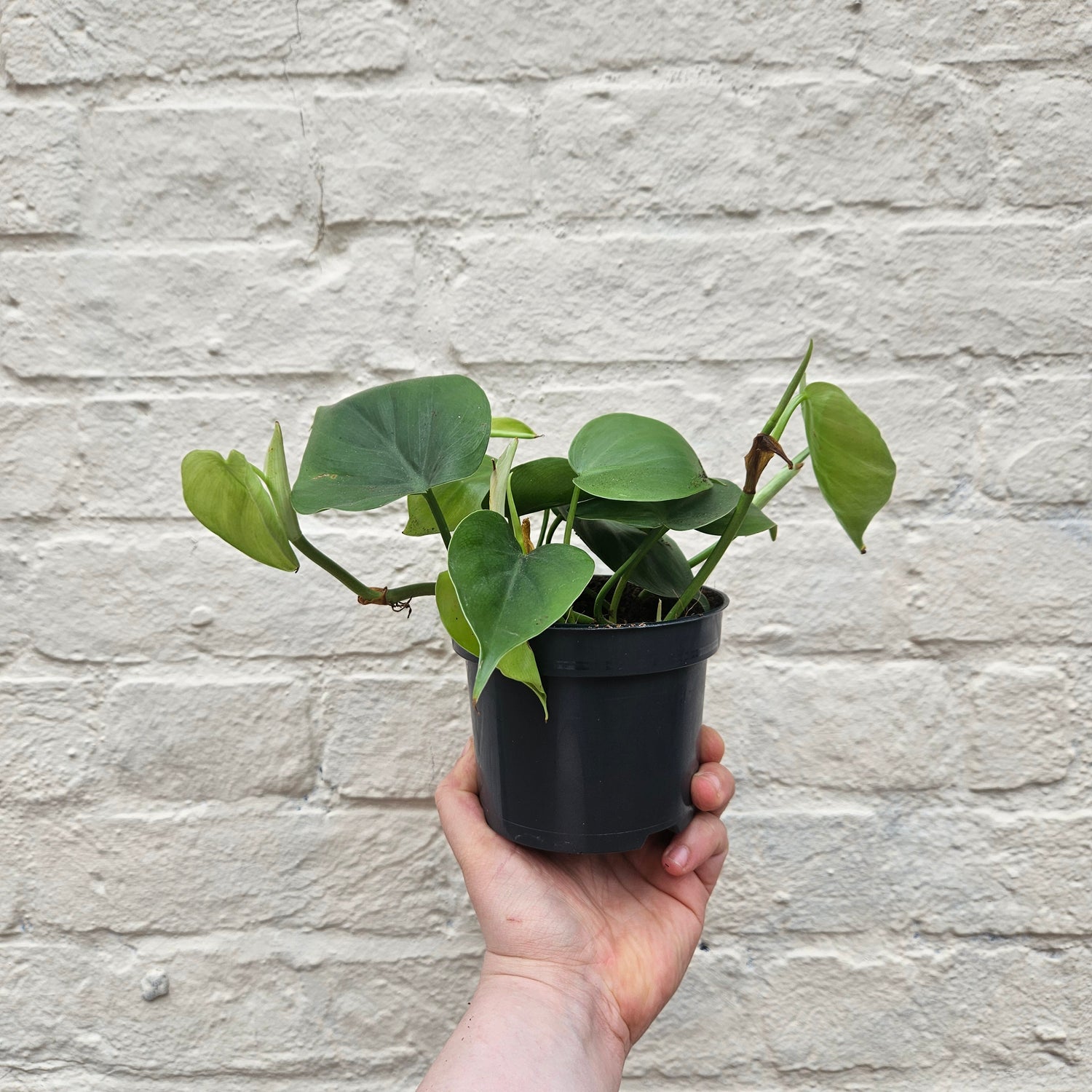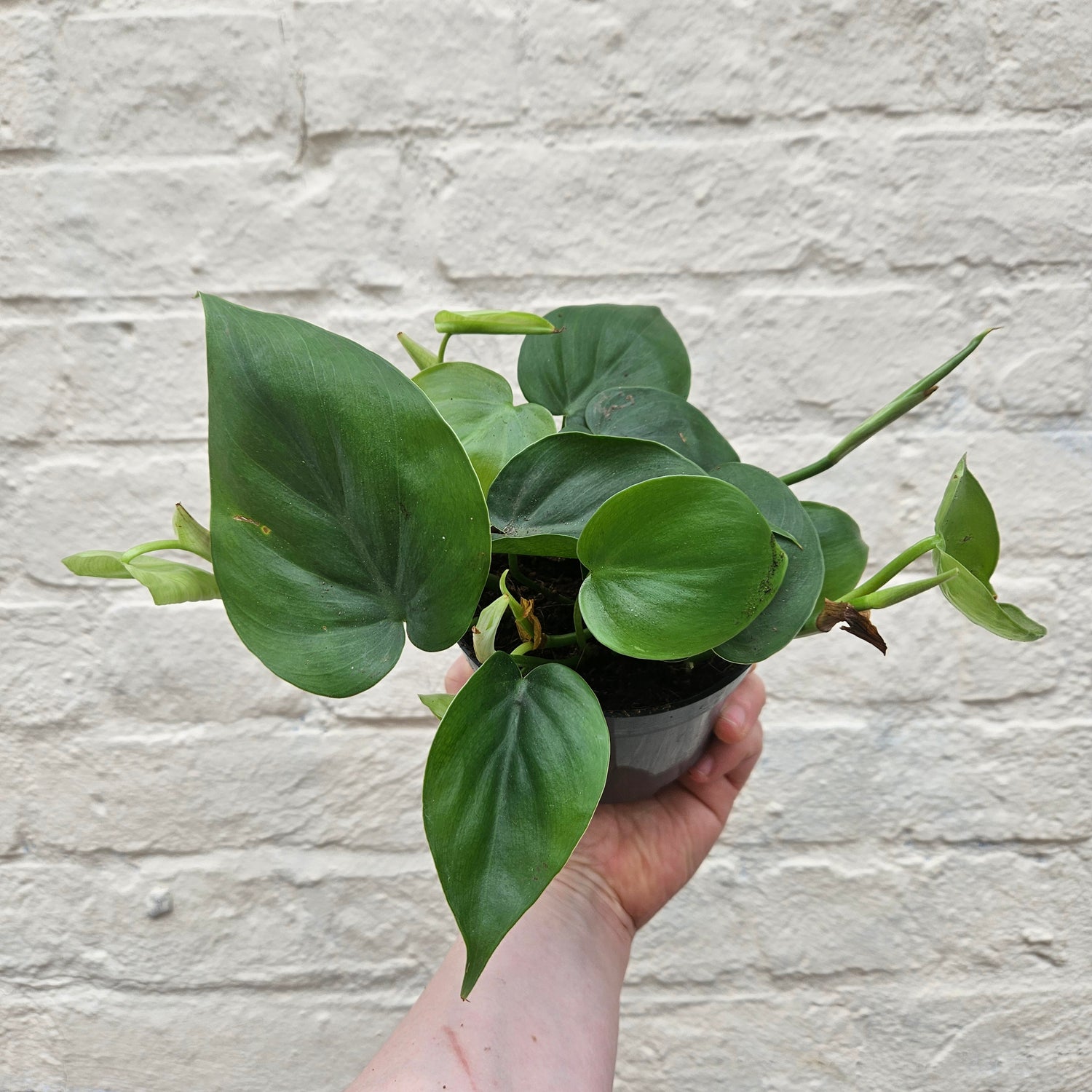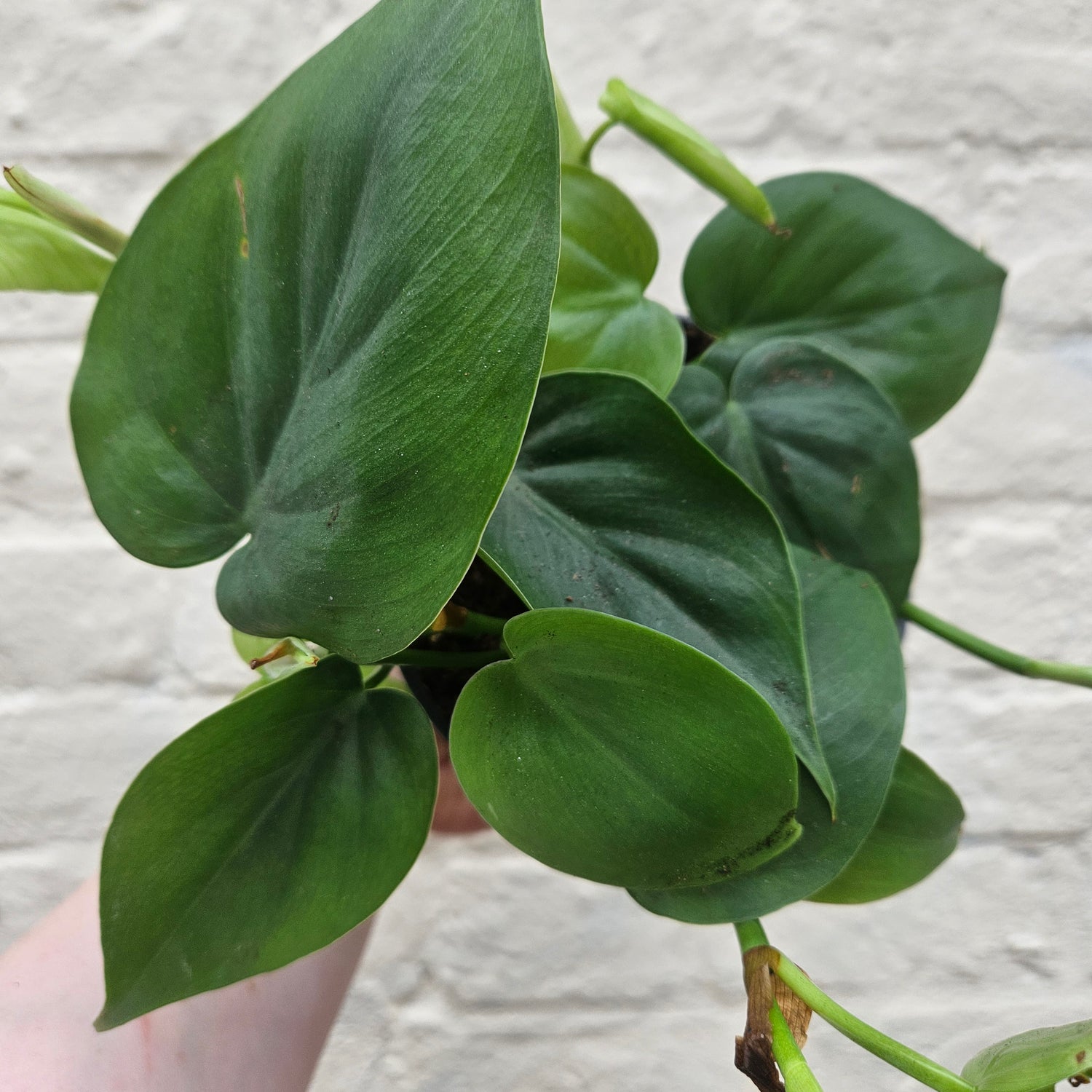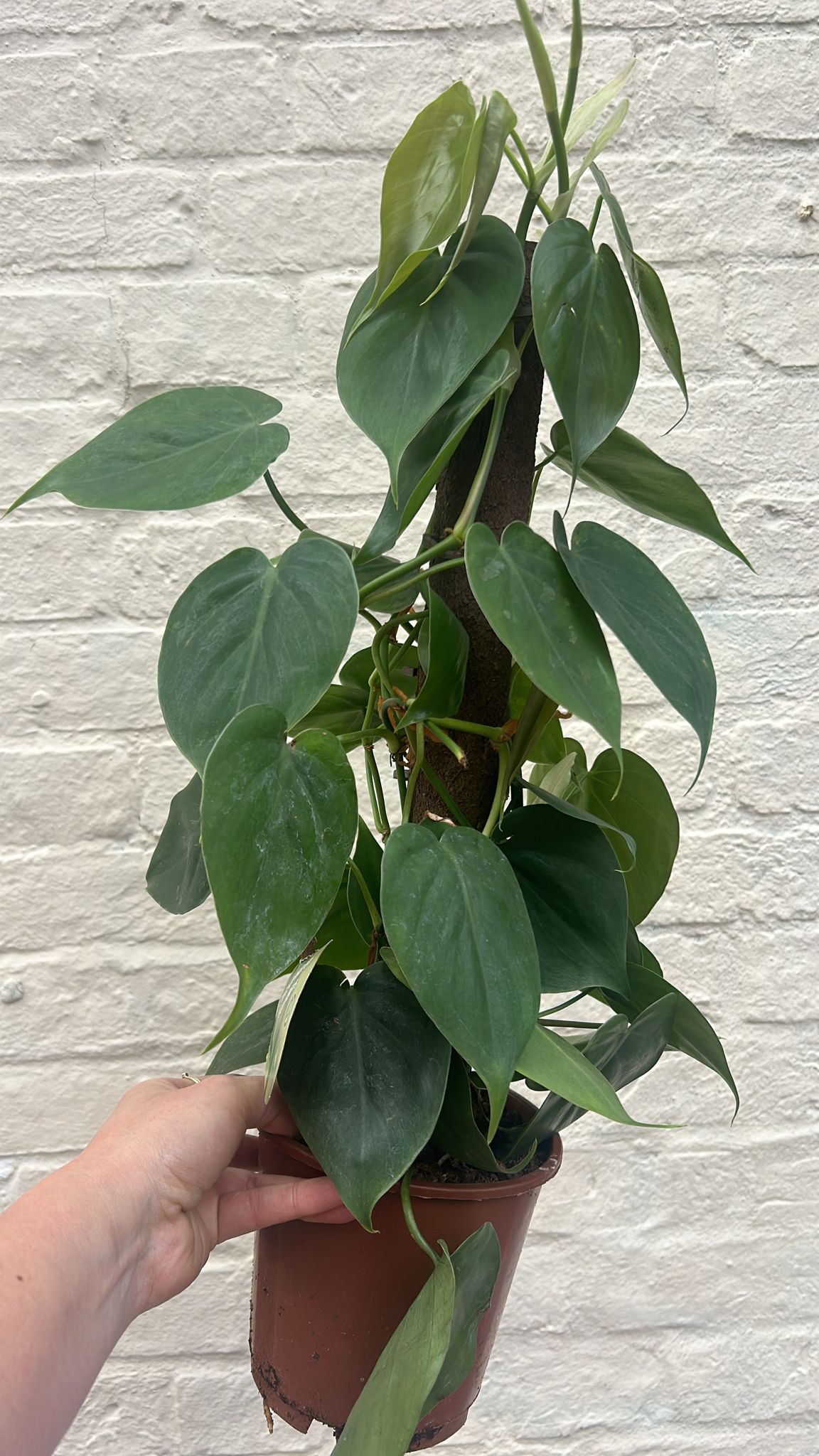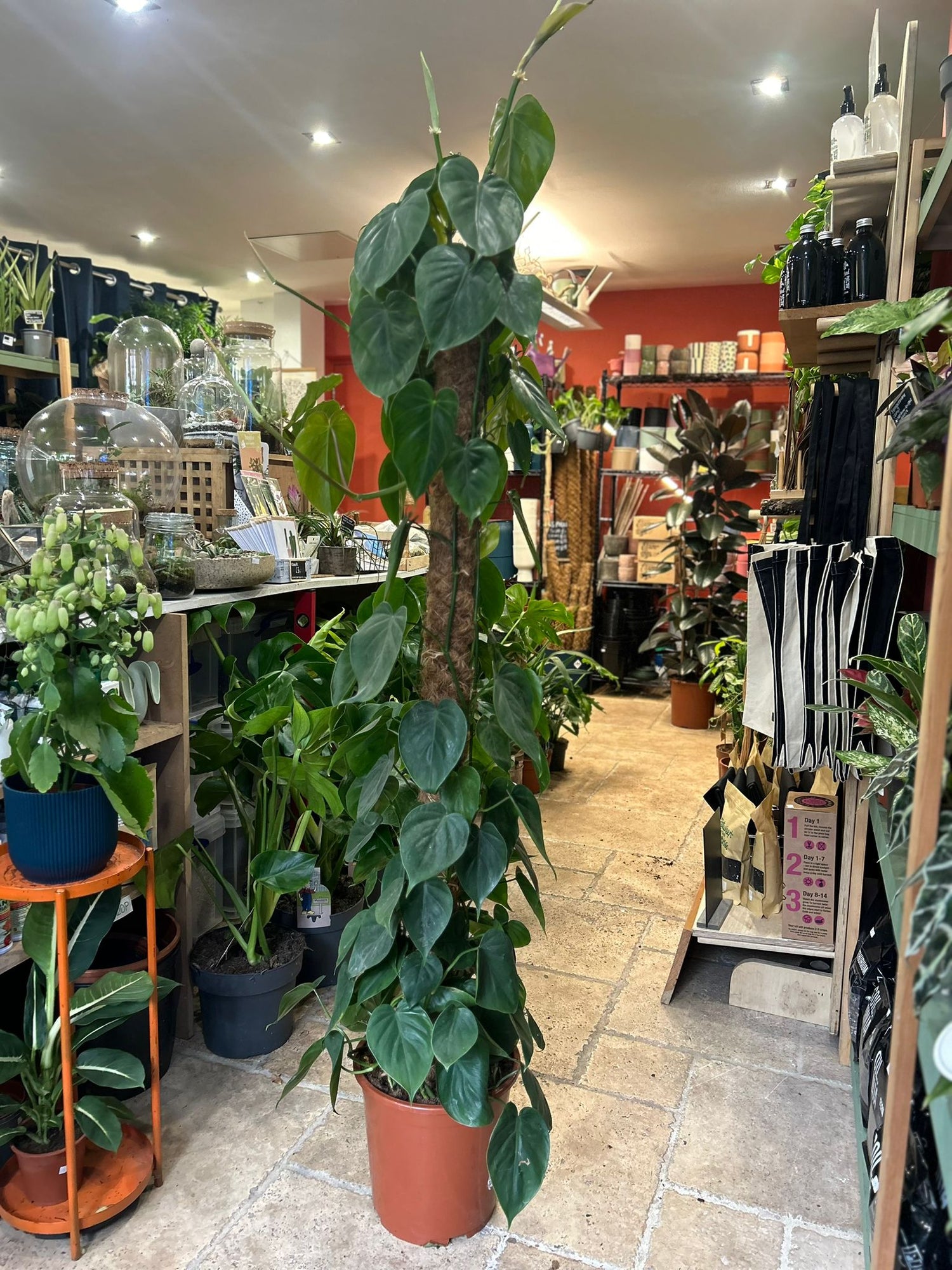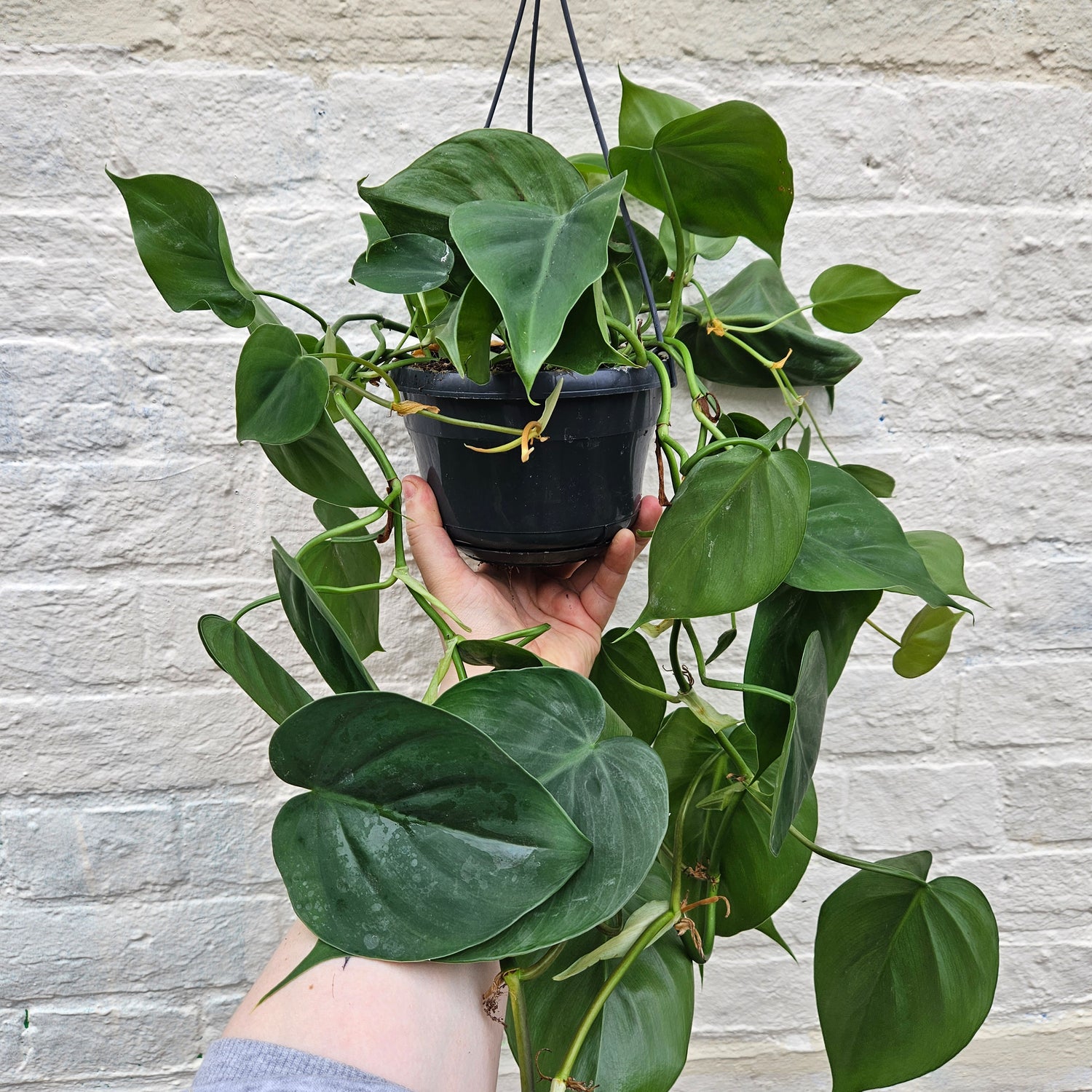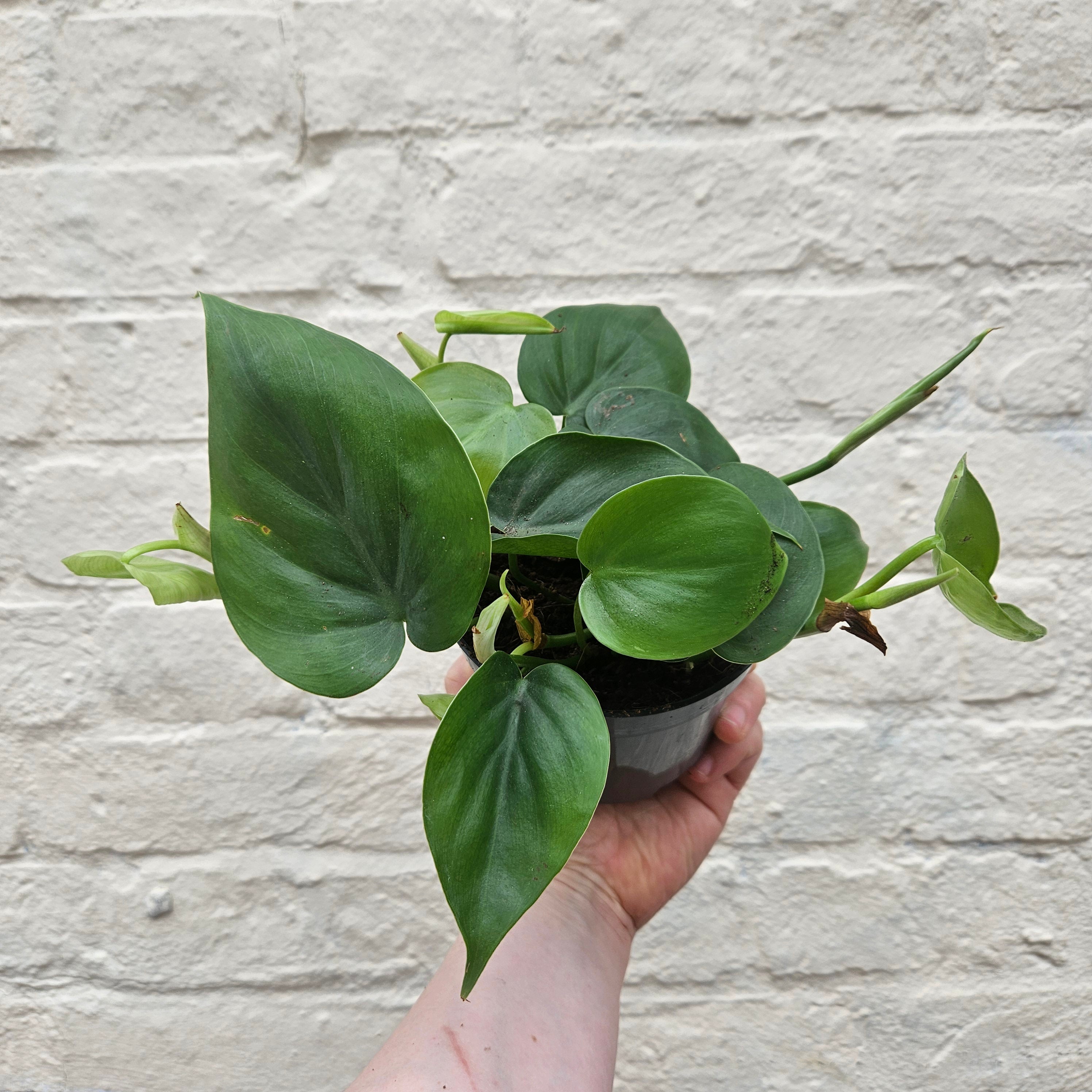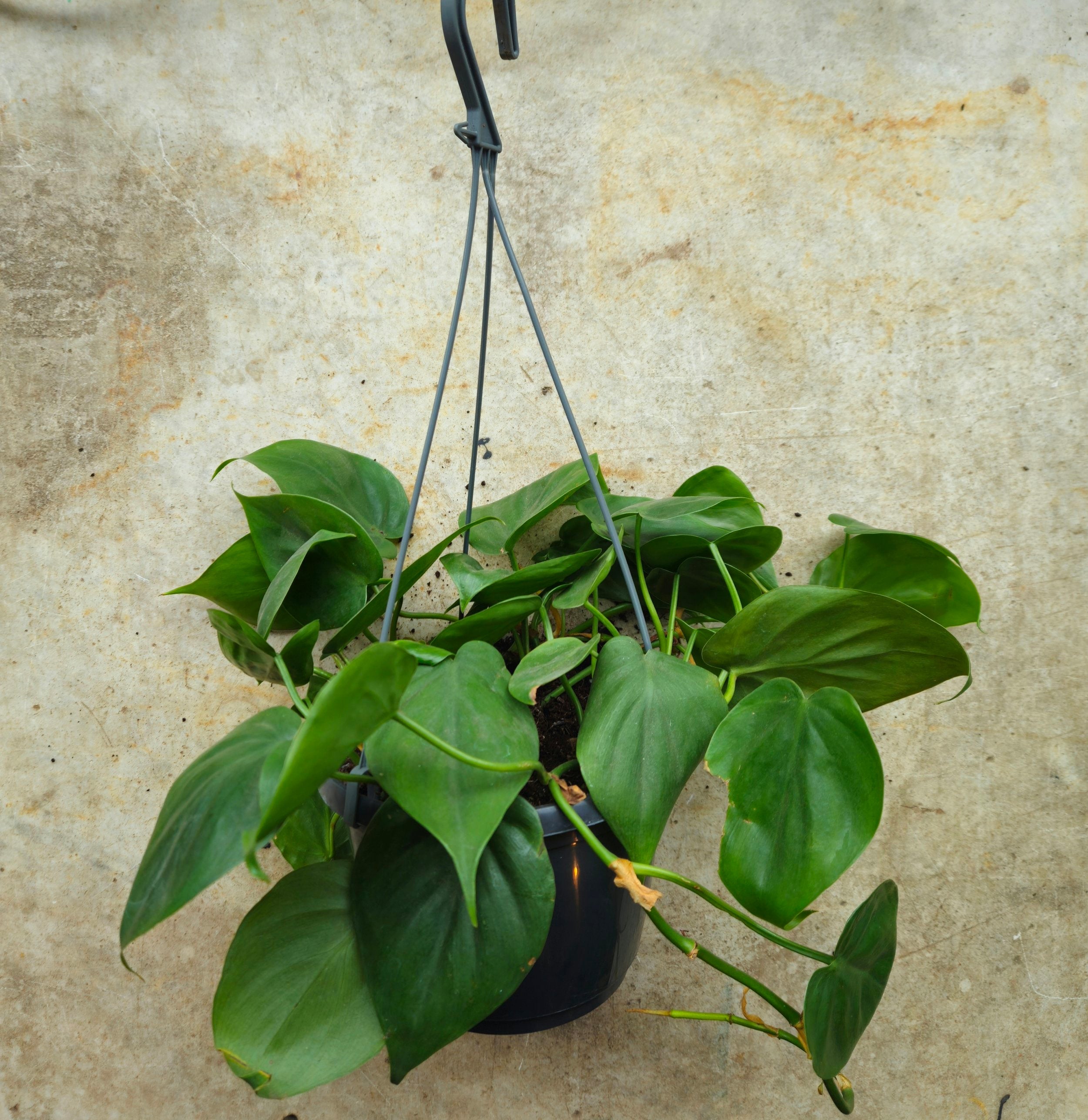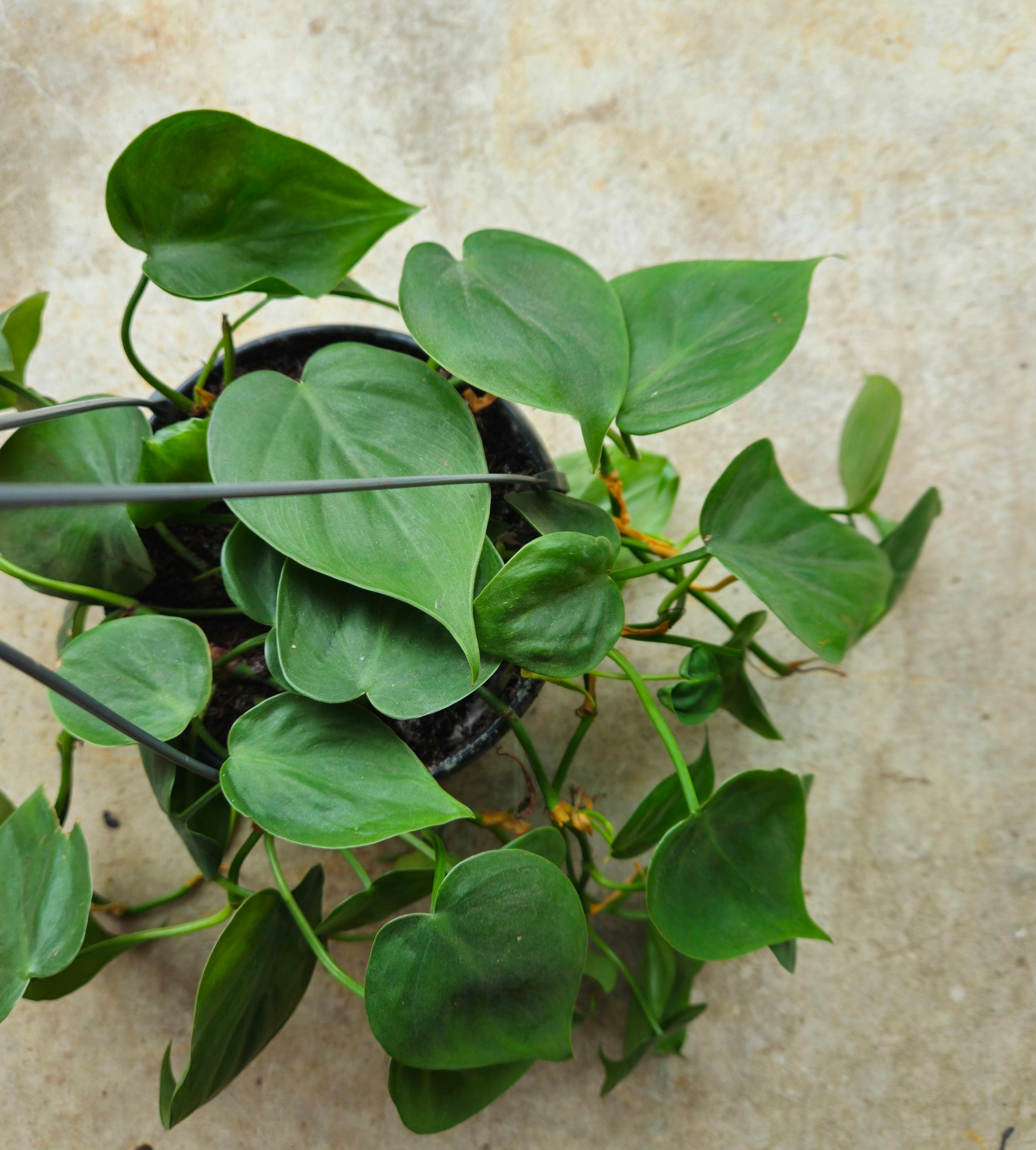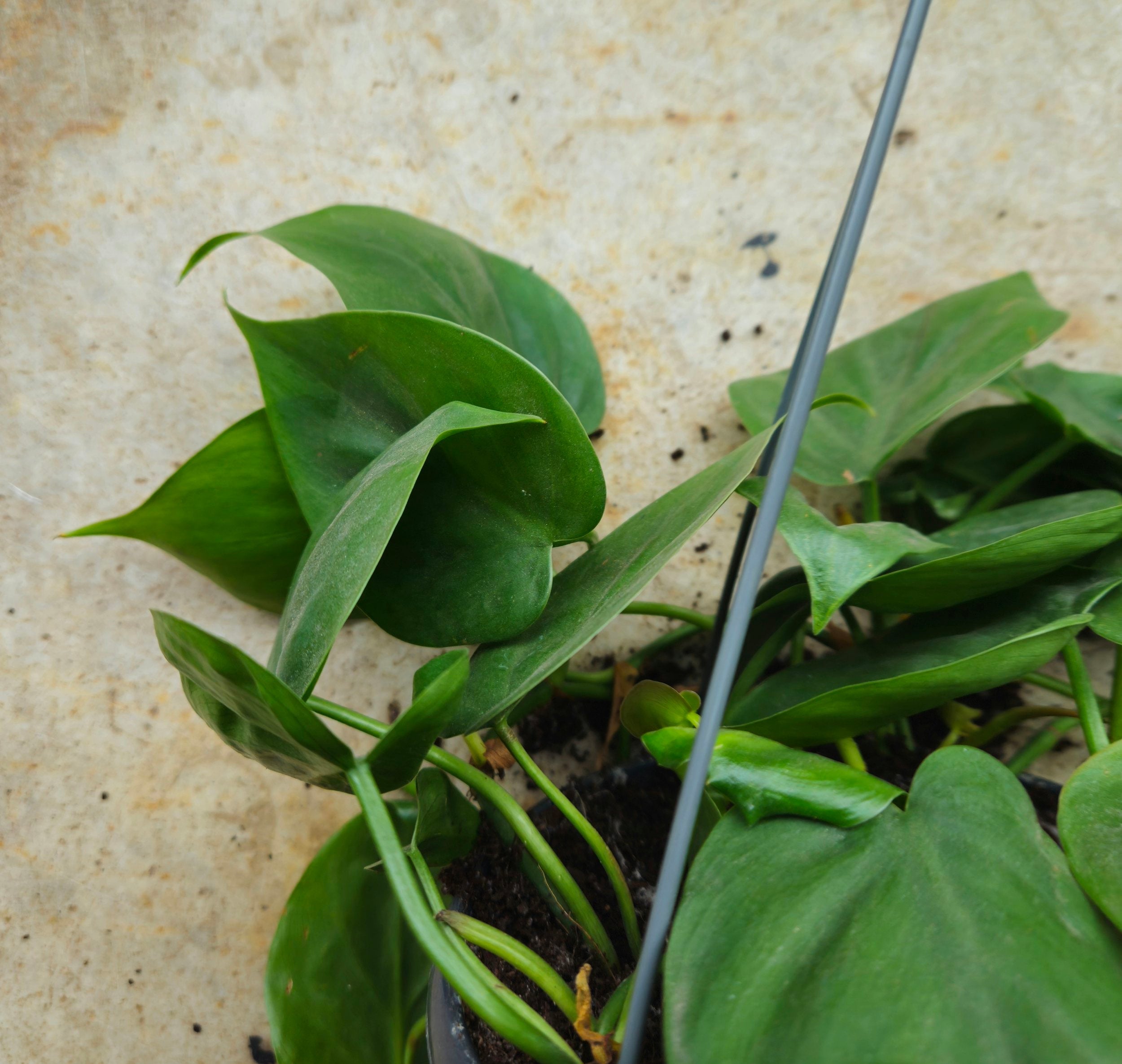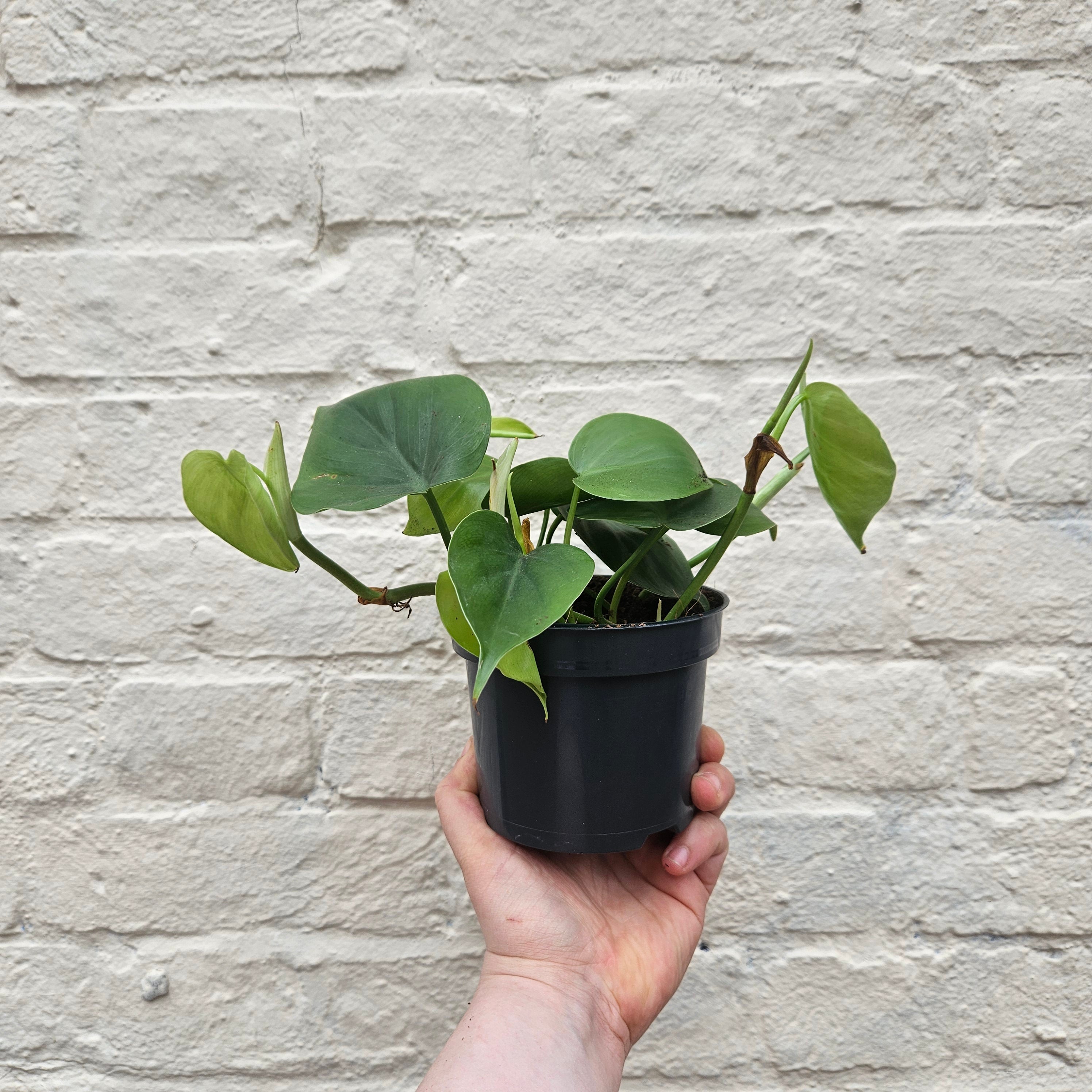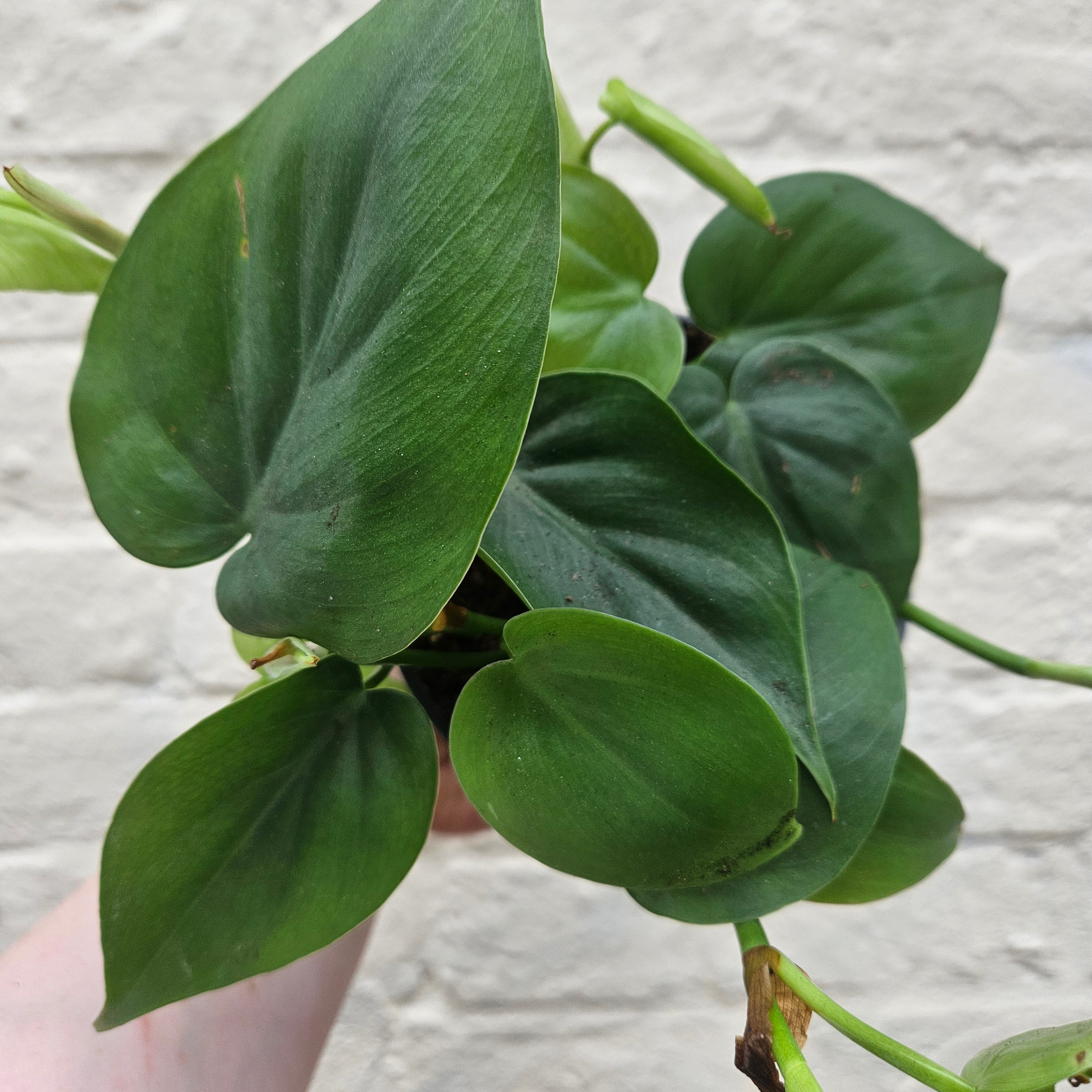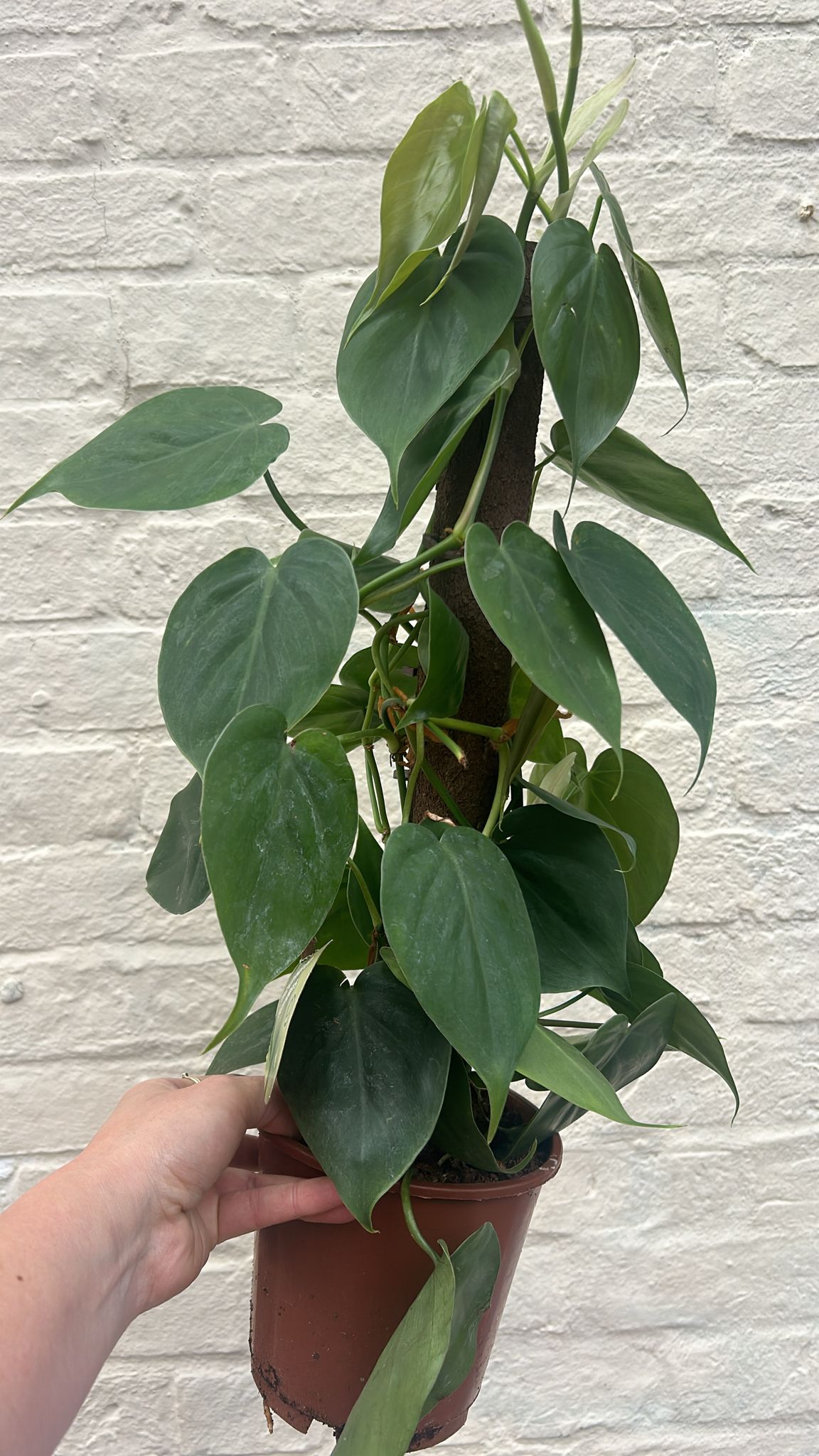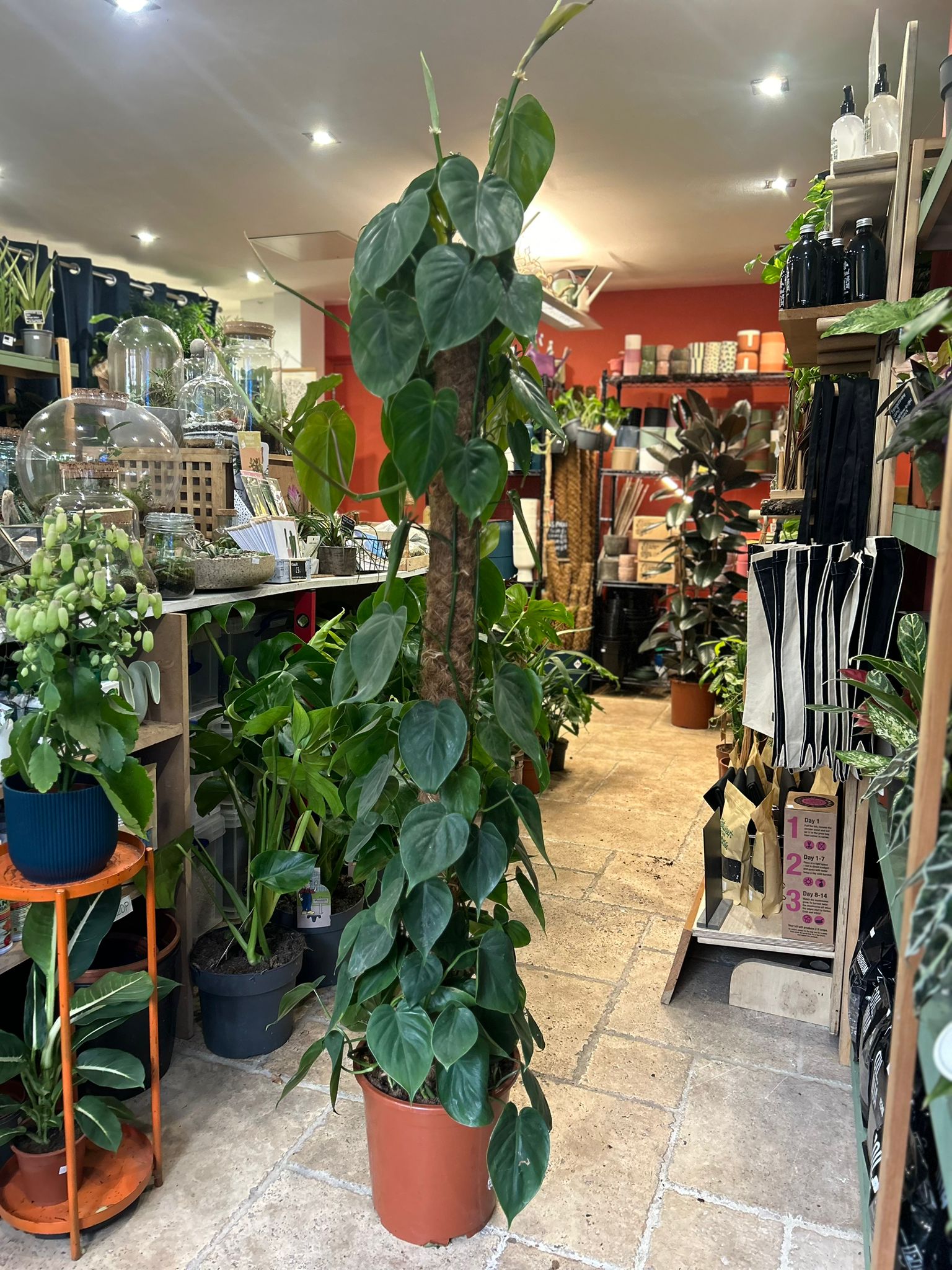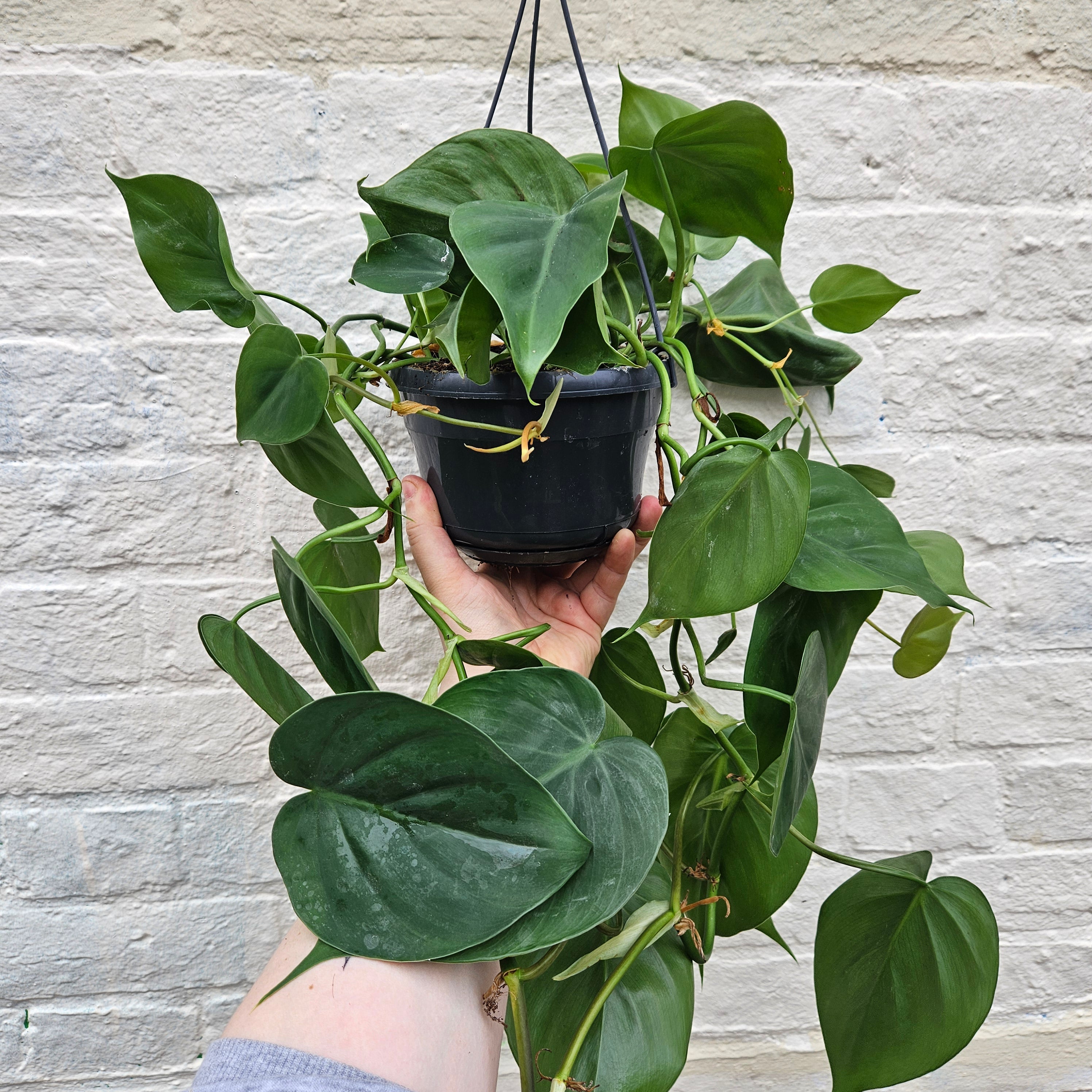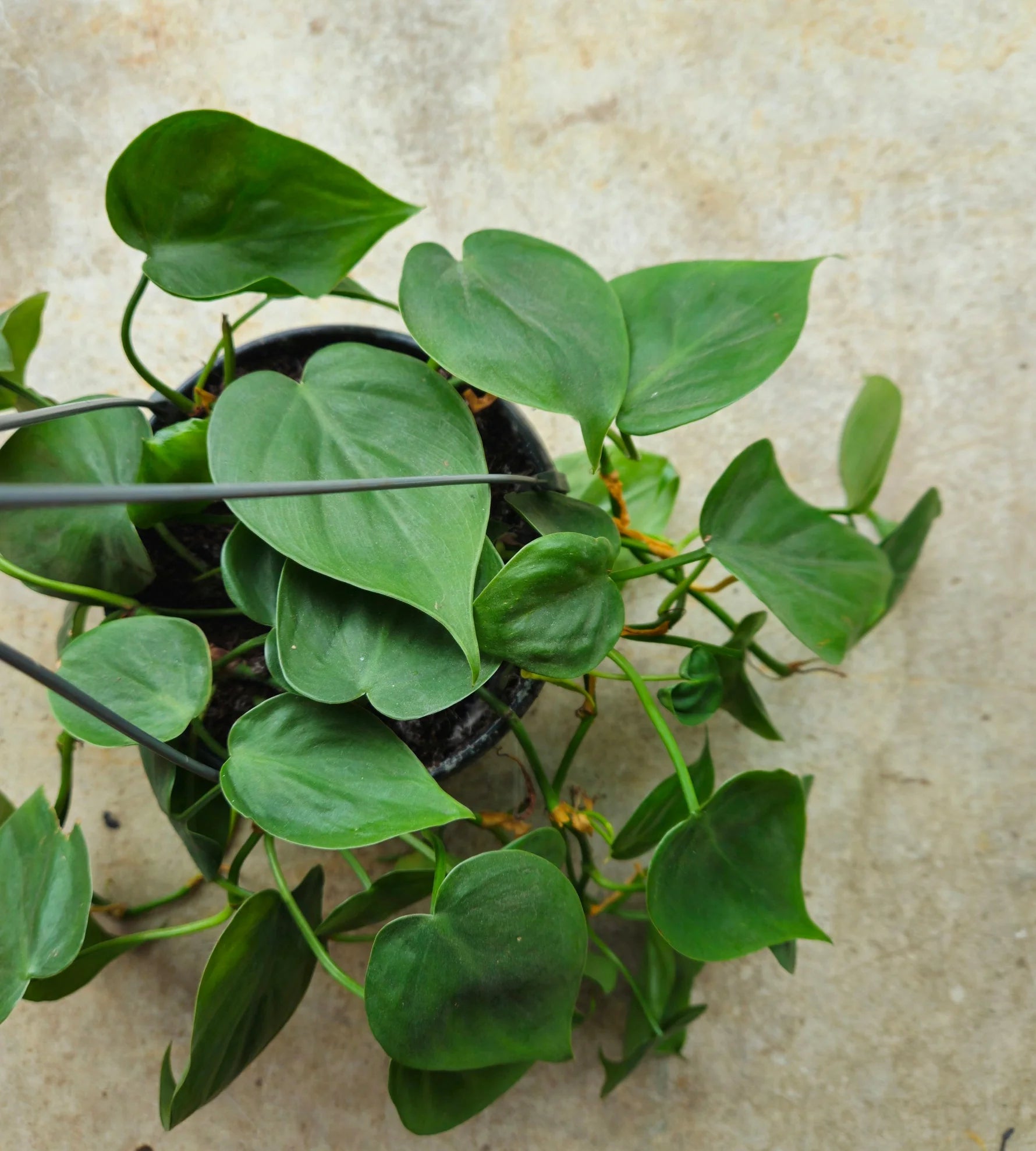Welcome to the wonderful world of Heartleaf Philodendron care! Philodendron hederaceum is often referred to as Heartleaf or Sweetheart plant. A stunning and popular houseplant known for being an easy care climber . Boasting wonderful heart-shaped leaves on long stems, in bright green of varying tones, with a silky sheen. These fast-growing philodendrons are known for their tolerance of lower light levels. They look great in a hanging planter or growing up a moss pole. In this comprehensive guide, we'll walk you through everything you need to know to keep your Heartleaf Philodendron healthy and thriving.
We stock a wide range of Philodendron Houseplants here at Between Two Thorns - check them out and find the perfect new green friend for your home.

Heartleaf Philodendron Overview
Native to Tropical America, the name derives from the Greek ‘philo’ for love and ‘dendron’ for tree.The Philodendron genus contains almost 500 plants, it is the second-largest genus within the Araceae family.
How to Look After a Philodendron hederaceum (Heartleaf philodendron)
Light:
Heartleaf Philodendron thrive in bright, indirect sunlight. Avoid direct sunlight as it can scorch their leaves. Can tolerate lower light so perfect for that shadier spot in your house. If your plant receives too little light, it may develop leggy growth with fewer leaves.
Temperature and Humidity:
Maintain a temperature between 12-30°C and can tolerate average room humidity levels high. However they will prefer an extra boost of humidity. Mist your plant regularly or place it near a humidifier to create the perfect environment.
Watering:
Water your Heartleaf Philodendron when the top 2 inches of the soil feels dry. It's better to underwater your plant than overwater, as too much moisture can lead to root rot. Use a well-draining potting mix with chunky components (such as coarse bark) and ensure the pot has drainage holes. Reduce watering in winter.
Fertilising:
During the growing season (spring and summer), feed your Philodendron with a balanced liquid fertiliser every 4 waters, it is always advised to follow the instructions on your fertiliser. Reduce feeding in the dormant winter months.
How to Re-pot a Heartleaf Philodendron
Re-pot your Heartleaf philodendron when it becomes root-bound or outgrows its current pot, typically every 2-3 years. Choose a pot that's one size larger, provide fresh, well-draining soil, and gently transfer your plant, being careful not to damage the roots.
How to Propagate a Philodendron Hederaceum
Propagating Philodendrons is an exciting way to grow new plants. Follow these steps:
- Choose a Healthy Stem: Select a stem with at least 5 few leaves and 2 nodes (small bumps on the stem where a leaf emerges).
- Cut the Stem: Use a clean, sharp knife or scissors to cut just below a node. Ensure your cutting is at least 8 cm long.
- Rooting: Place the cutting in lukewarm water or moist soil. Roots should develop within a few weeks.
- Transplant: Once your cutting has well-established roots, transplant it into a pot with the appropriate soil mix.

How to Prune a Heartleaf Philodendron
Pruning your Philodendron helps maintain its shape and encourages healthy growth. Trim yellow or brown leaves, as well as leggy stems. Make clean cuts just above a leaf node.
How to Take a Cutting from a Heartleaf Philodendron
Taking cuttings for propagation follows a similar process as mentioned earlier. Ensure you choose a healthy stem, make a clean cut, and follow the propagation steps.
How Often Should I Water a Heartleaf Philodendron
Watering frequency depends on various factors like humidity, temperature, location and pot size . As a general rule, check the top two inches of soil and water when it's dry. Water less in winter and more frequently during the growing season.
Why Are My Heartleaf Philodendron Leaves Going Yellow/Brown/Curling?
- Yellow Leaves: Yellowing leaves can result from overwatering, poor drainage, or too much direct sunlight. Adjust your watering and lighting conditions accordingly. If the leaves are wilting and yellowing it is most likely to be due to overwatering, check the roots for rot and re-pot if necessary. Sometimes yellow leaves are just old leaves that need to be taken off.
- Brown Leaves: Brown edges or spots may indicate low humidity, underwatering, or direct sunlight. Increase humidity and adjust your watering routine. Too much warmth, for example, if the plant is next to a radiator, can cause brown leaves that dry up and fall off.
- Curling Leaves: Curling leaves can be a sign of underwatering, over-fertilization, or low humidity. Ensure proper watering and humidity levels.
How to Make a Heartleaf Philodendron Bushy
Encourage bushier growth by regularly pruning leggy stems and small leaves. Providing adequate support for your plant can encourage larger leaves. A moss pole or bamboo cane can be used to help it grow more compactly. Ensure your Philodendron has enough light, lack of light can cause this plant to become leggy.
Are Heartleaf Philodendrons Poisonous to Cats and Dogs?
Yes, Philodendrons are considered toxic to cats and dogs. It contains insoluble calcium oxalate crystals that can cause oral irritation, drooling, and digestive issues if ingested. Keep your Philodendron out of reach of pets or opt for pet-friendly houseplants.
With these expert tips, you're well-equipped to care for your Philodendron Hederaceum and enjoy its lush, tropical beauty in your home. Happy Heartleaf Philodendron growing!
